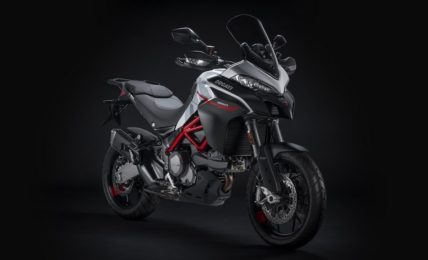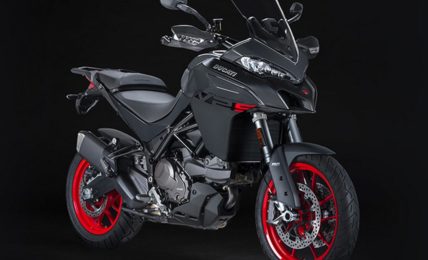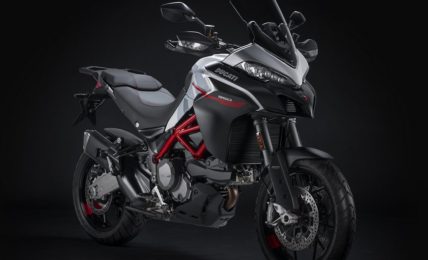Straight line stability is splendid on the Ducati Multistrada 950
Performance – The fun revving 937cc L-Twin motor has been borrowed from the Hypermotard family. This is the first time a Multistrada has come with a lower capacity mill. Producing the exact number as from the donor family, the engine has its maximum power of 113 BHP at 9000 RPM and the abundant 96 Nm of torque comes at 7750 RPM. This powertrain is high and quick revving and has a different state of tune, unlike the other Multistradas. It gets a decent mid-range and a considerably good top-end. With the four riding modes kept at default, the Sports and Touring get similar power and throttle response. The Enduro and Urban get the least power and in these modes, the bike doesn’t feel like it’s even moving.
The Testastretta engine is borrowed from the Hypermotard family
L-Twin engines have a vivid design, more space for other stuff in and around
The engine heat is very well contained and the fairing design helps the heat flow away from the rider’s legs, unlike the 1200 Enduro. In traffic or slow riding, the heat is evident and can be felt all over. The 6-speed gearbox has a good feel and crisp shifts. However, the clutch feels heavy and is a slipper clutch that only actions on over-run. The NVH levels aren’t the best either and there’s a considerable amount of harshness, more than what is expected from a Ducati engine. Vibrations can be felt on very low or even at very high RPMs and the noise of the L-Twin isn’t really pleasing.
Rider as well as pillion comfort is the forte of the Multistrada
Riding Dynamics – Everyone in the Multistrada family except the 950 gets a wheelie control. However, the 8 levels of DTC and 3 levels of ABS are enough to keep the ride more tamed than necessary. The electronics work really well as the engine isn’t that powerful to challenge the hardware. It doesn’t get cornering ABS either but the sophisticated Bosch ABS system works like a gem. Twin 320 mm discs with Brembo Monobloc brakes and a single 265 mm disc generate enough stopping force that the Multistrada literally nosedives. At a wet weight of 229 kgs, the Multistrada sure is heavy and has not lost much from its elder brothers.
The Multistrada 950 requires rider efforts for spirited riding
The bike feels just as heavy as other bigger Multistradas, yet a little sluggish
The same Pirelli Scorpion tyres do the job on all the Multistrada but here the rear tyre gets a slightly smaller section rubber. The cast alloy design is now revamped and the front has been raised from 17-inch to 19-inch making it less corner friendly. The tubular steel trellis frame does not flex with so much to hold and does the job well. 48 mm front KYB forks and Sachs monoshock at the rear are fully adjustable but would require human effort and a few handy tools. At the default suspension setup, the front acts hard and solid. The rear, however, felt too spongey and wavy even without a pillion.




